Cranogwen sculpture celebrates an extraordinary Welsh woman
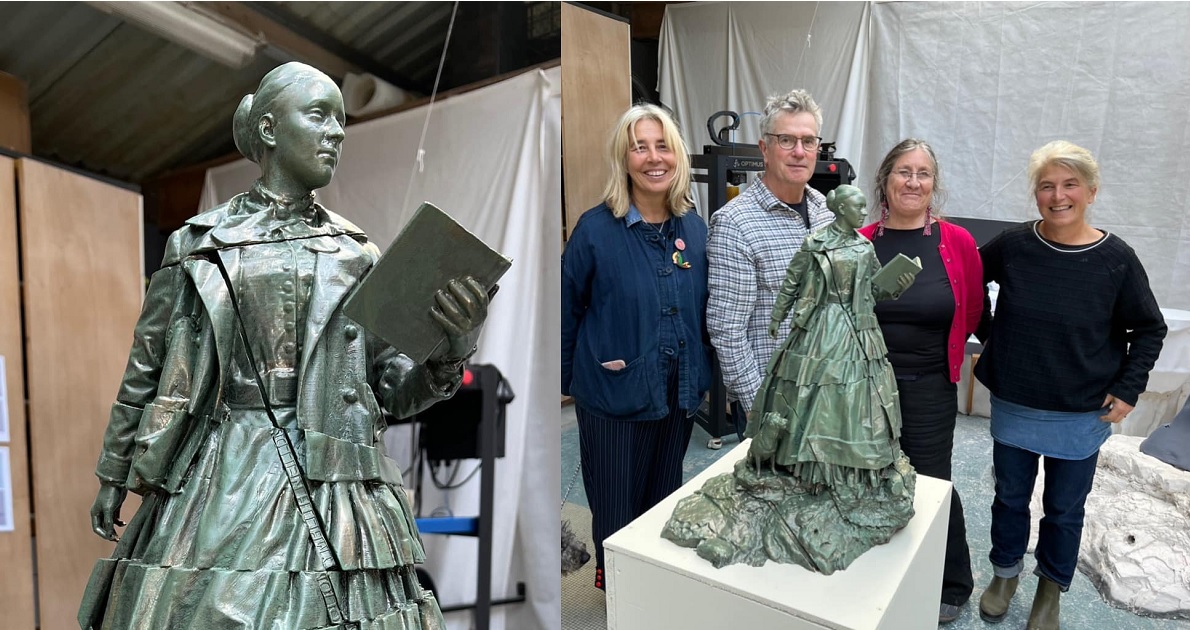
For the last three years, Sebastien and Helena Boyesen have been working on the statue of Sarah Jane Rees, Cranogwen (1839 – 1916), which will be unveiled on the 10th June 2023 at Llangrannog, Ceredigion.
Rhiannon Lewis speaks to them ahead of the ‘big reveal’.
Rhiannon Lewis
You’ve worked very closely together on other projects. To what extent is the Cranogwen statue a collaborative work?
Helena: Sebastien is in charge of the physical work and the final concept and design choices.
Sebastien: I always refer to Helena; without her input it would end up being a different piece of work altogether.
Do you sometimes disagree?
S: We talk through the process and arrive at the same place.
H: Where we differ, I think, is that we work in a slightly different way. He often thinks he’s explained things but he doesn’t actually verbalise everything. But the process involves extensive talking. It is a metamorphic process.
When did you realise that you wanted to be a sculptor, Sebastien?
S: There was a seminal moment when my father, who was an artist / sculptor showed me a picture of Michelangelo’s David. I was about 10 years old. I was astonished by what could be done and the practical skills needed to create it.
Of all the sculptures in the world, which one would you most like to have been responsible for and why?
S: David by Michelangelo, of course. And his Pietà. Also, Michelangelo’s unfinished slaves? But look at Ippolito Scalza’s Pietà in the cathedral in Orvieto to see what I believe is one of the greatest technical achievements of the Renaissance era… just incredible!
Influence
Which artists have had the biggest influence on you?
S: Michelangelo, Eduardo Paolozzi, Henry Moore, Elisabeth Frink, Antoine Bourdelle, Auguste Rodin.
What are the best British sculptures, in your opinion?
H: The giant horse’s head, Still Water, in Marble Arch sculpted by Nic Fiddian-Green.
S: George Frederic Watts’s Physical Energy at the Serpentine Park.
The worst?
S: Maggi Hambling’s statue of Mary Wollstonecraft in Newington Green, London. It’s completely mystifying.
Pablo Casals once said that ‘music is the divine way to tell beautiful, poetic things to the heart.’ What do you think sculpture communicates to us that can’t be communicated in any other way?
S: Casals is right. An emotional hit from a piece of music can have the same effect as sculpture, but it isn’t as if they hit different buttons.
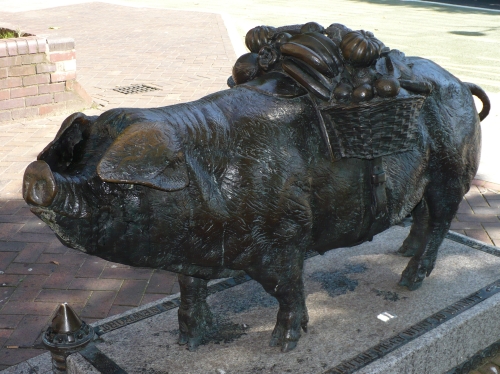
Humour
Of all the works you have been responsible for, which is your favourite, the one you are most proud of and why?
S: This Little Piggy, created in 1993 for Newport Borough Council. It involved being a town artist and not having to work to a particular brief. It was a brilliant job to do – it was a life size pig. It was a blissful time. We had pigs at home in the garden. It was a proper piece of sculpture. It fulfilled everything I wanted to do as a sculptor.
H: Some of Seb’s best pieces are when he allows his humour to come through.
Is it hard to part with pieces?
S: When completely unique, yes. No one realises how much work and effort goes into pieces. But there comes a moment when you have to pack everything away. Everything I do, each one is a project.
If you were given a commission with a limitless budget, which piece of work would you like to create?
S: Anything living. It would probably be an animal. A representative piece. That’s where I’m happiest. The thing I love most in life is looking at nature. I’d love to do a giant moose or a giraffe. Or a bison. They are magnificent, beautiful, sculptural animals with energy, poise and elegance. The whole process of living as a sculptor means living with the beauty of nature, looking harder and trying to capture it.
H: Seb also loves the geometry of nature, the symmetry of nature, seed pods, patterns in the natural world.
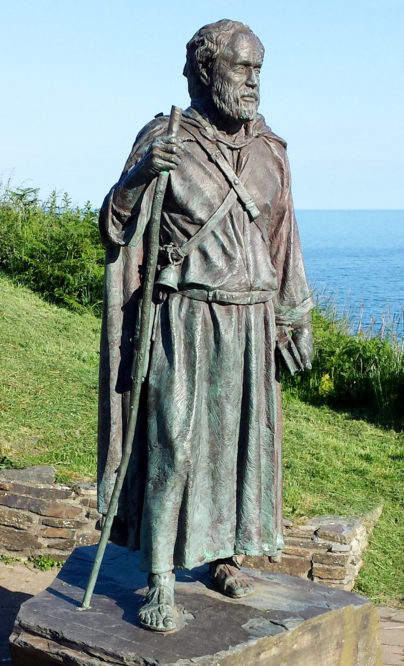
Curiosity
Your statue of Sant Crannog has become an iconic part of the landscape of Llangrannog. He draws you up the road to enjoy a moment of quiet contemplation overlooking the sea. I imagine Cranogwen will do the same, situated, as she will be, close to the centre of the village. What knowledge, thoughts or emotions would you like people to take away from their visit to the Cranogwen statue?
H: We want to trigger curiosity, make people ask why is the statue there. There will be a bilingual book published later this year so that people can learn about her and all the things she achieved. We wanted the statue to convey the fact that she was studious, she was strong, very sure of herself but not aggressive. We wanted the statue to convey a feeling that she is inviting you to be part of what she’s doing. She wanted to engage with people, to break barriers. We only have three photographic portraits of her and none of them are very good quality.
S: She has a pensive quality to her face, which we wanted to get across. It’s a tricky thing to achieve. The statue is giving life to an extraordinary woman.
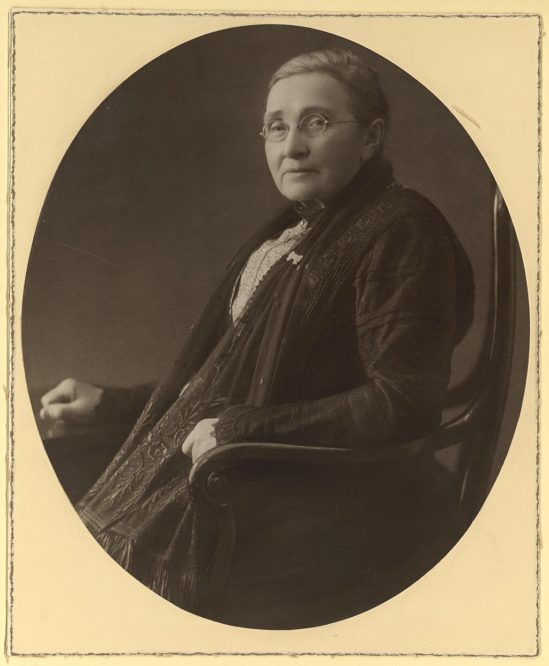
What do you know now about Cranogwen that you didn’t know at the start of the process?
S: So many things. Although we’ve lived in Llangrannog for 32 years and walked past her gravestone nearly every day, there were things we didn’t know about.
H: She won a bardic chair. She went to America. She had two romantic relationships with women. She had a wicked sense of humour. She was a proponent of tonic sol-fa. She adored animals. When she died, she asked that her horse be put down because she couldn’t bear the thought of it being passed from person to person.
Did you feel under pressure to portray Cranogwen in a particular way?
S: We were given a brief. The Monumental Welsh Women (Commissioning group) wanted her portrayed at the height of her profession, as a mature woman, not as a young woman.
H: She was famous for wearing a sea captain’s coat. We were keen to use that. In the photographs, it is double breasted but cut short, so it sits neatly on top of a skirt.
Was it a hindrance or a help that so many people feel as if they have a vested interest in the memory of Cranogwen?
S: We had an open studio policy so that people could see how the ideas were developing.
H: At every stage of the development we would talk to the steering group, set up at the beginning of the initial development of the sculpture in 2020. We consulted often with Jane Aaron, author of the book on Cranogwen (published by University of Wales Press, 2023). There was some friction; there were those that didn’t want to acknowledge that she was gay. No one really knows whether she was or not, but her two most influential relationships were with women. We also wanted her to be an attractive woman.
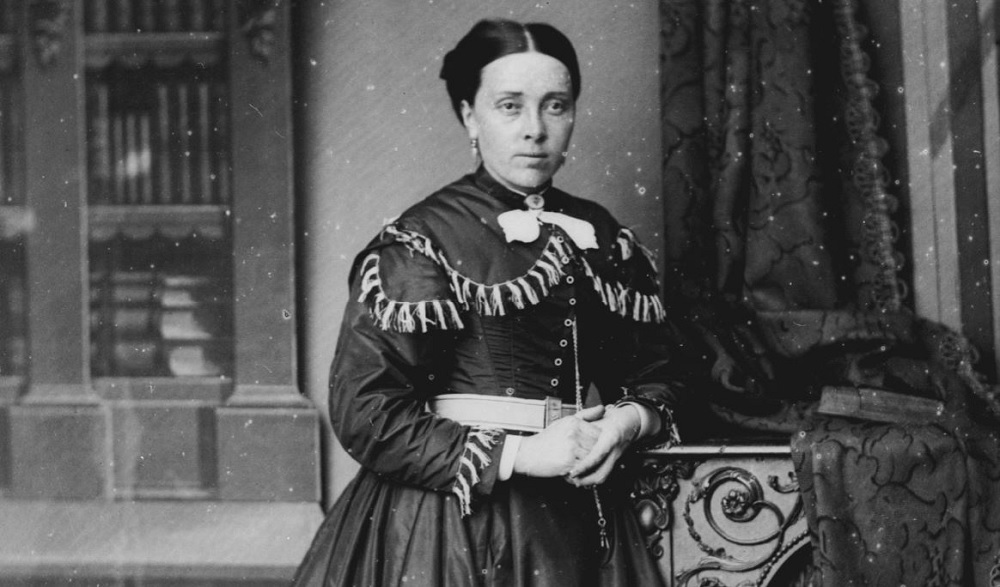
Process
Talk us through the process of creating the statue.
S: First we decided on the look, the pose that we wanted. We hired costumes and chose our model, Anne-Marie Bollen, who lived in Llangrannog at the time, so that we could develop the three dimensional form and pose using photographs. The moment that changed everything was when we walked down to the beach to take some photos of her standing on a rock. The costume blew in the wind and that changed it all. We used a three dimensional scan to capture and scale it up.
The rift in the statue is a touch of genius. Explain how that came about?
S: We were looking at the rock face on the beach at Llangrannog and realised that the alabaster in the rock was a fantastic metaphor for Cranogwen and her struggle to break so many barriers. The alabaster strips break through the surface under pressure just as Cranogwen’s talents surfaced under difficult circumstances.
H: Cranogwen was trying to break through in a male patriarchal society, breaking barriers in so many ways – as a poet, an editor, a preacher, travelling to America to lecture. The rift in the rock is a perfect way of conveying that sense of breaking through.
Do you think you would like Cranogwen if you met her today?
H: She would not have been an easy woman to befriend. She only tolerated children. She would have looked at you with engaging eyes but wouldn’t have been at all frivolous.
S: I would have loved to meet her. You can imagine her in the evenings talking about art and culture. She would have understood other artists.
Are there things you have discovered about her that aren’t general knowledge?
H: She had a pet cemetery!
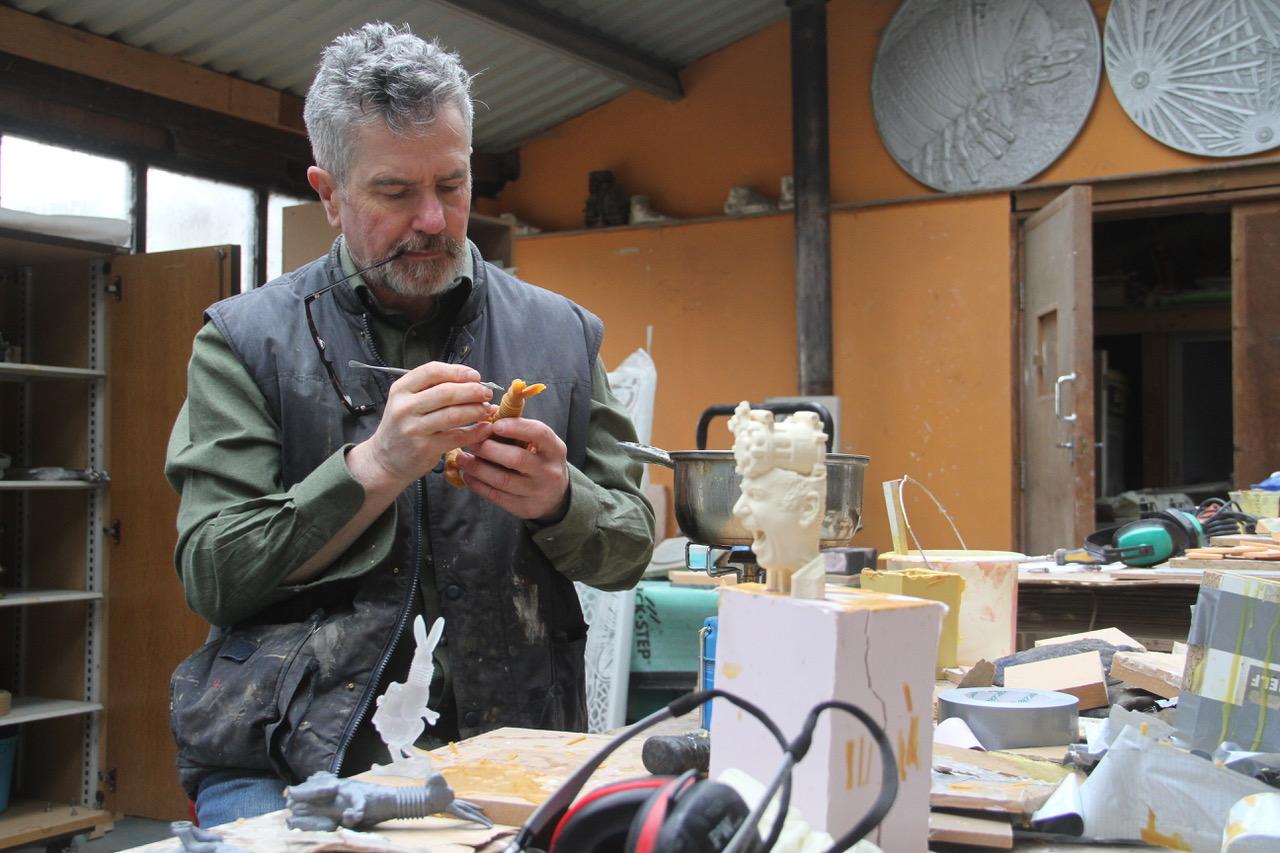
Developments
You won your first commission in 1984. How do you think your work as a sculptor has changed since then?
S: Life is a series of developments. What intrigues me now is how differently I would do those early projects if I did them again.
H: There have been so many technical advances, new computer programmes; the skills needed now are very different.
On your website, you describe yourself as ‘A designer for the environment we live in’. Can you elaborate?
S: As a young artist I had this idealised dream about what I could do as an artist. I would look at the built environment and ask why were things so badly done. It was something I wanted to address – to get the chance to improve everybody’s daily life. There’s a great example of this in Centenary Square, Birmingham by artist Tess Jaray. Where they’ve paved the entire square but rather than do it in a straightforward way, they have introduced a design into the bricks. It wouldn’t have cost much more to do, but makes a simple and impressive difference to the aesthetic. Generally, European countries have a much better appreciation of natural aesthetics than we do.
If a budding young sculptor were to read this interview, what advice would you give them about the creative life, or specifically the life of a sculptor?
S: Go do something else! No, seriously, I would say ‘go for it’. See as much as you can, look at sculpture. Learn to draw. All artists capture their first ideas on paper.
If you hadn’t been allowed to be a sculptor or a creative person, what else would you have liked to be?
S: I couldn’t have been anything else.
H: I would have been an explorer. I love research.
What would you say are the essential traits needed to become a sculptor?
S: You need a great deal of self-belief.
H: You’ve got to have a massive ego.
S: You need a passion, to carry on when things get difficult. In 1991 when we moved here we had no idea how we were going to earn a living.
H: You need a very tough skin.
S: For a while, I worked for various commercial businesses as a sculptor and prop-maker. It was well paid, but not fulfilling. Drawing from life gave me a profound sense of happiness. It took a while to understand what sculpture meant for me.
Music
I often listen to music when I am looking for inspiration for the mood of a particular scene or story. Have you turned to any music as inspiration for the Cranogwen statue?
S: No. I rarely have music playing when working. However, if things are tough, I turn to Van Morrison, Joni Mitchell and John Martyn – the Holy Trinity. They instantly make you feel healed, however bad things may be.
In what way has living in Llangrannog nurtured your creativity?
S: We live in the place we were always meant to live. It’s incredibly special. Although it is bleak and desolate in the winter, in spring and summer, we live in heaven.
H: We’re not dictated to by our environment. We have such wide-open spaces and freedom. We’re not stifled. We knew we needed that openness.
S: It would be so upsetting to live in a city. Here we do what is called forest bathing every day. Life makes sense.
Sebastien and Helena Boyesen were in conversation with Rhiannon Lewis, author of My Beautiful Imperial and I Am the Mask Maker. Her grandmother was born in Llangrannog in 1898 and lived in Felin Uchaf, Rhydcolomenod.
Support our Nation today
For the price of a cup of coffee a month you can help us create an independent, not-for-profit, national news service for the people of Wales, by the people of Wales.




